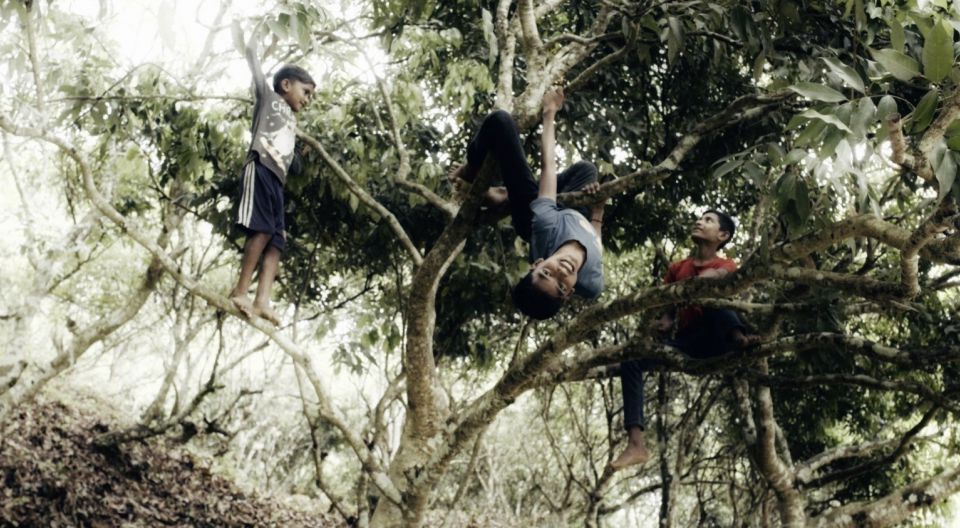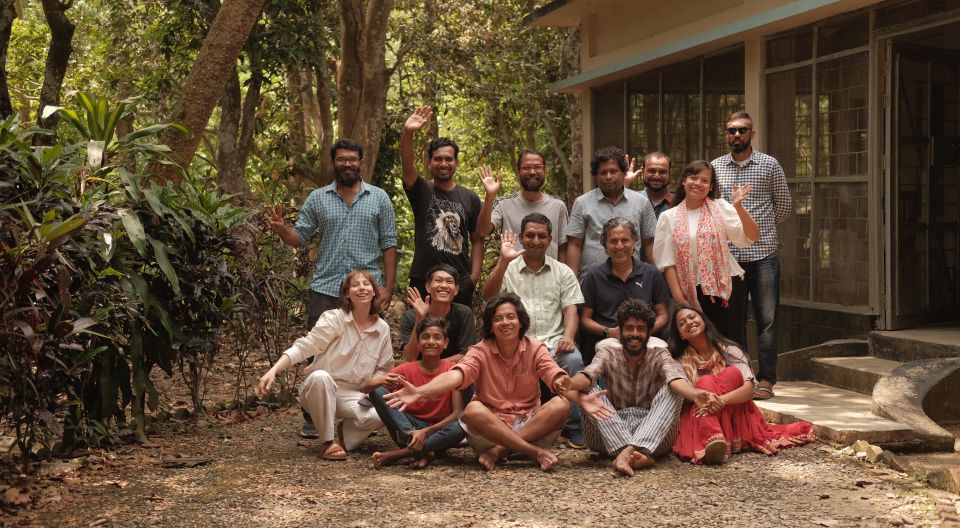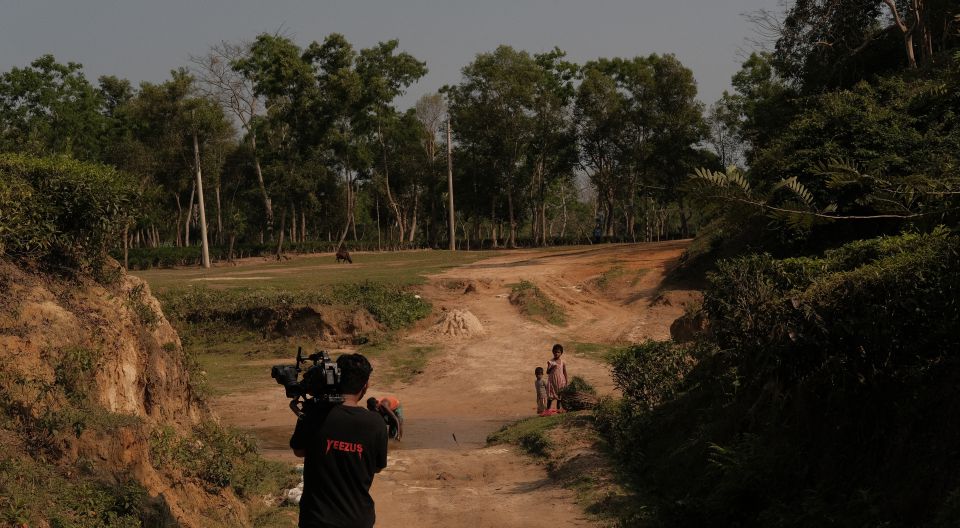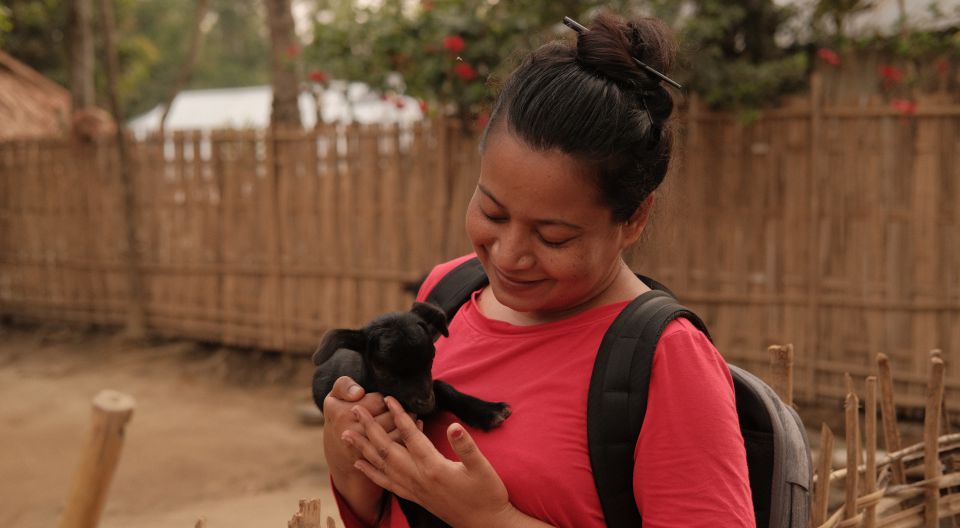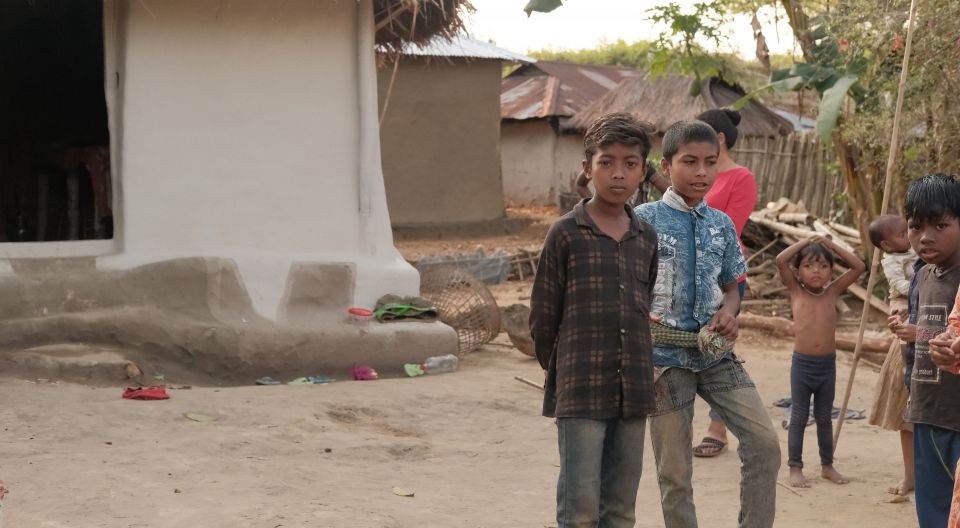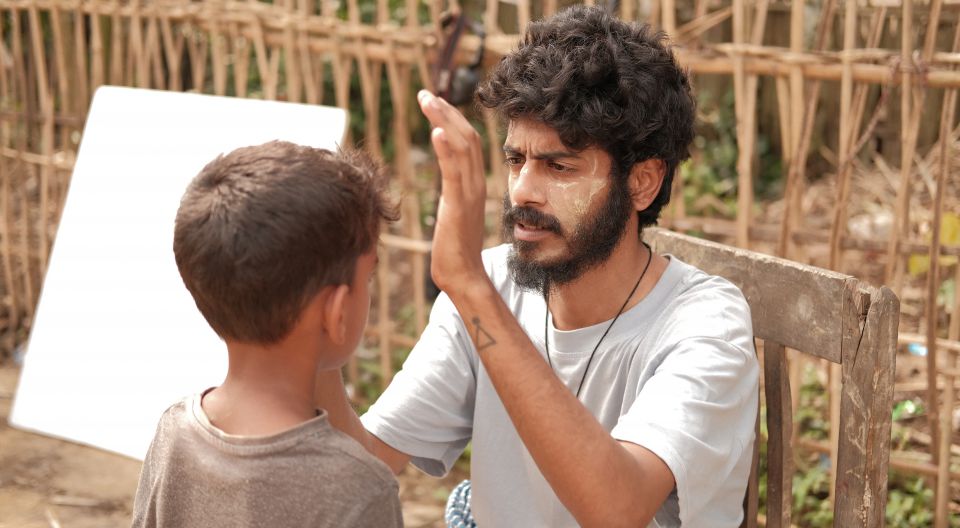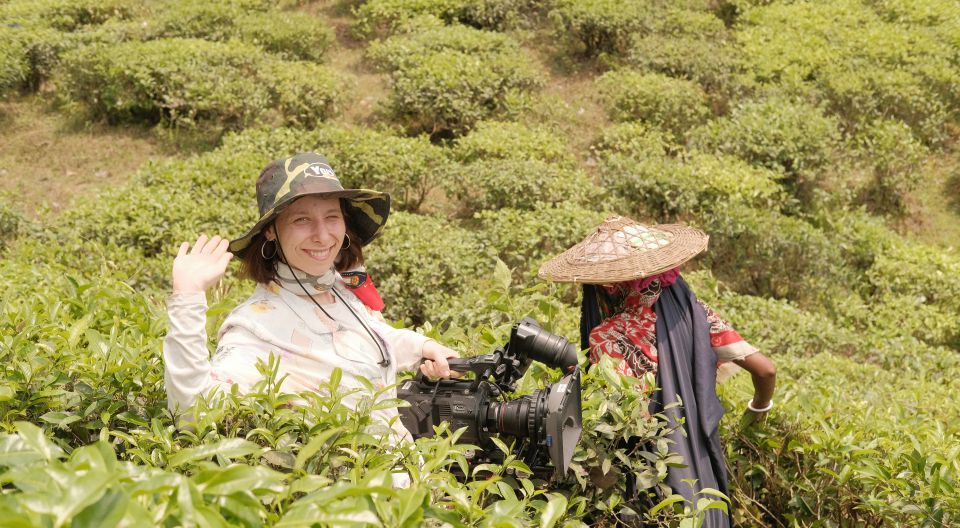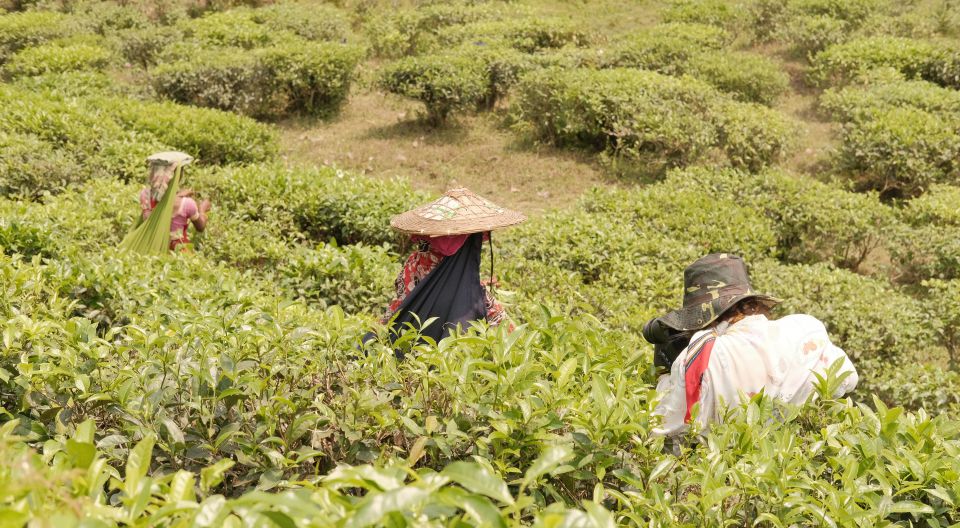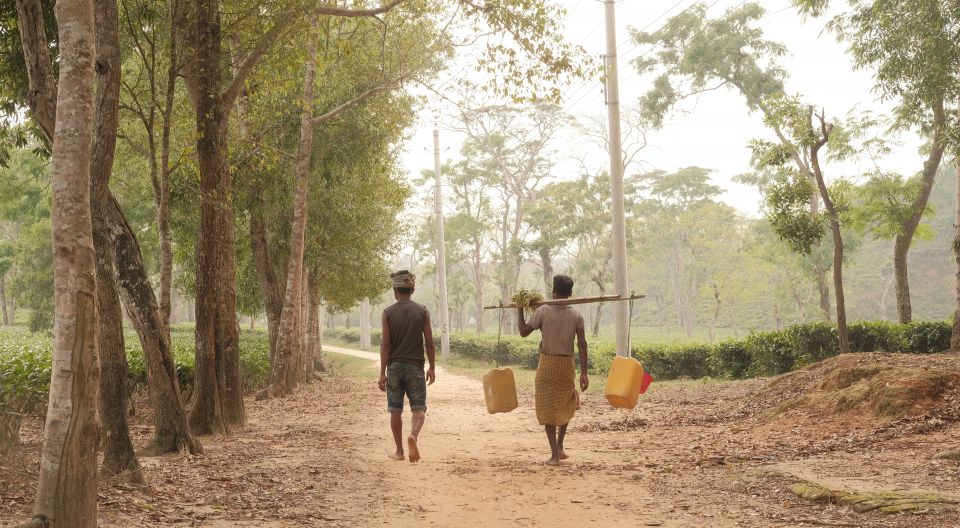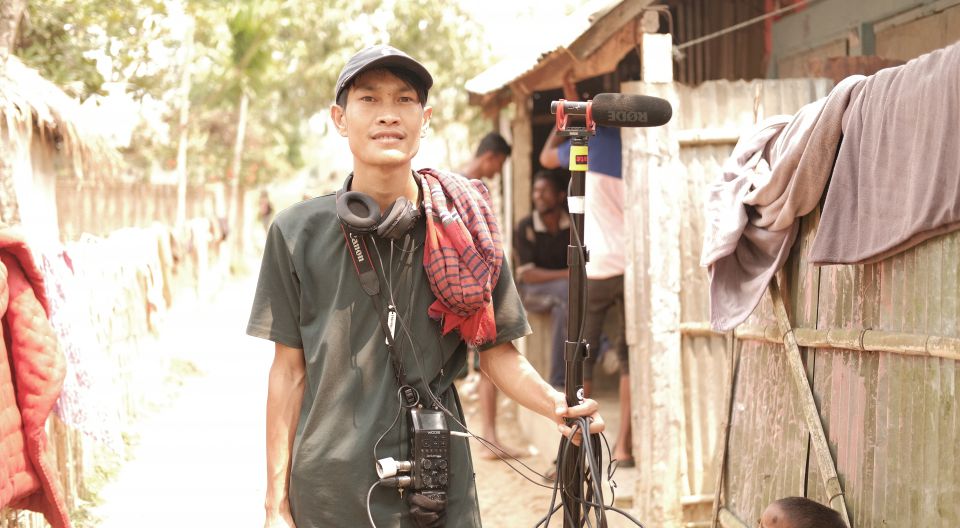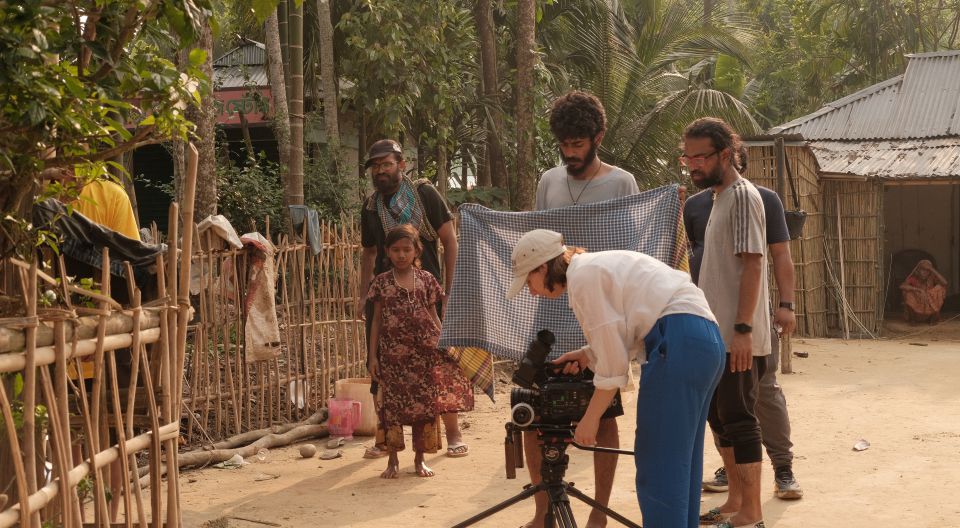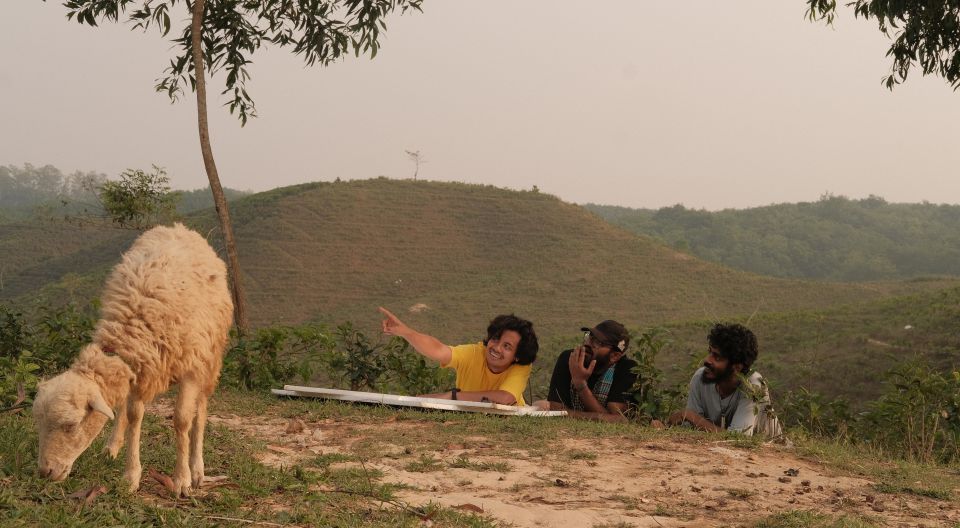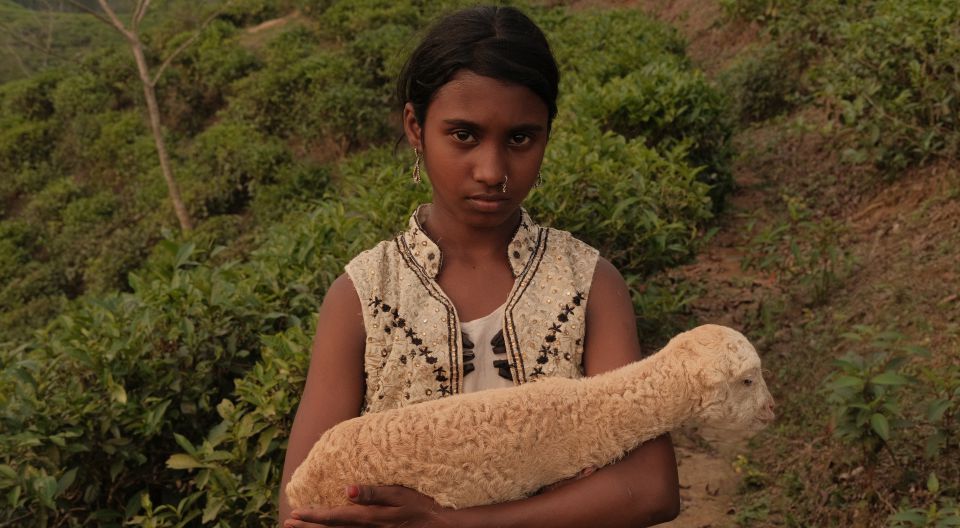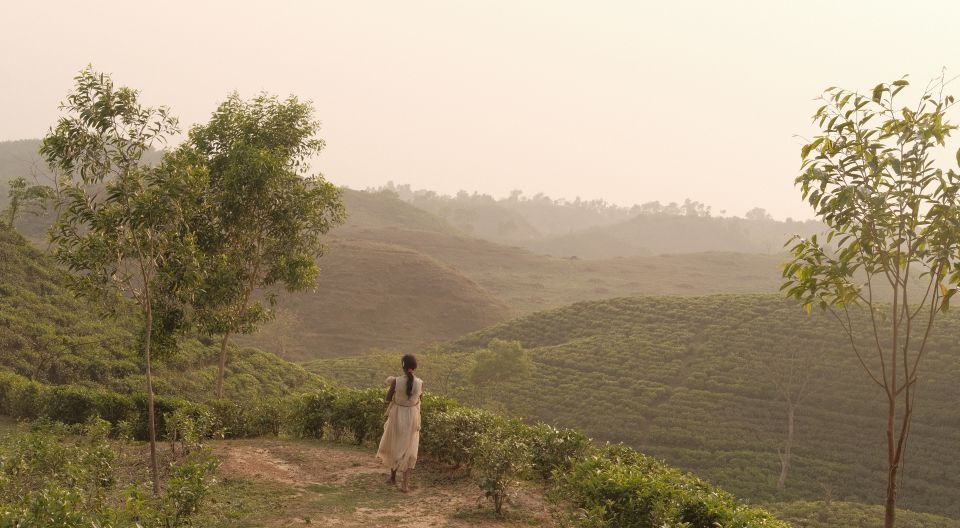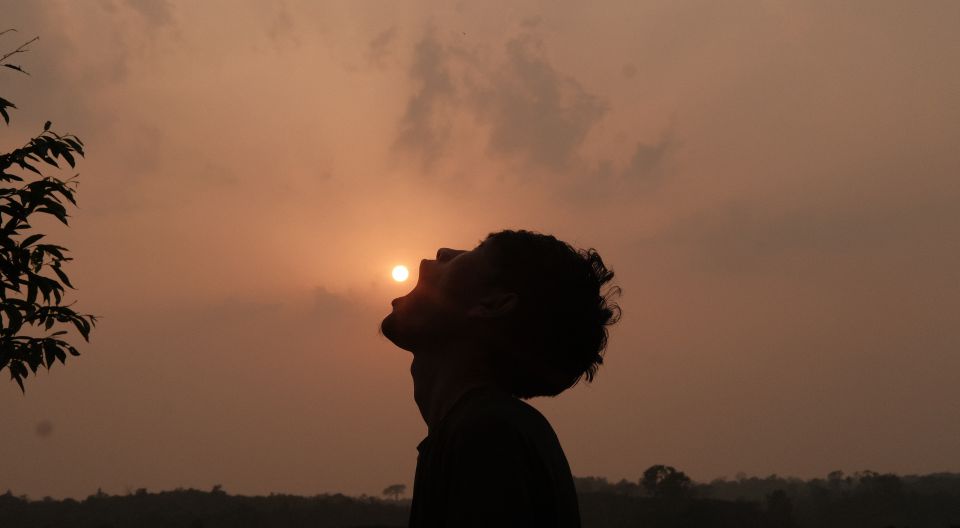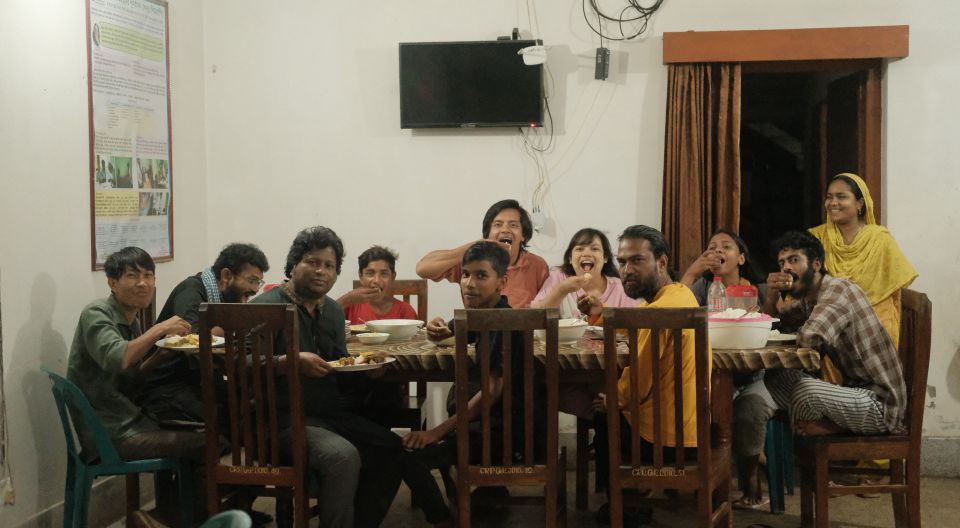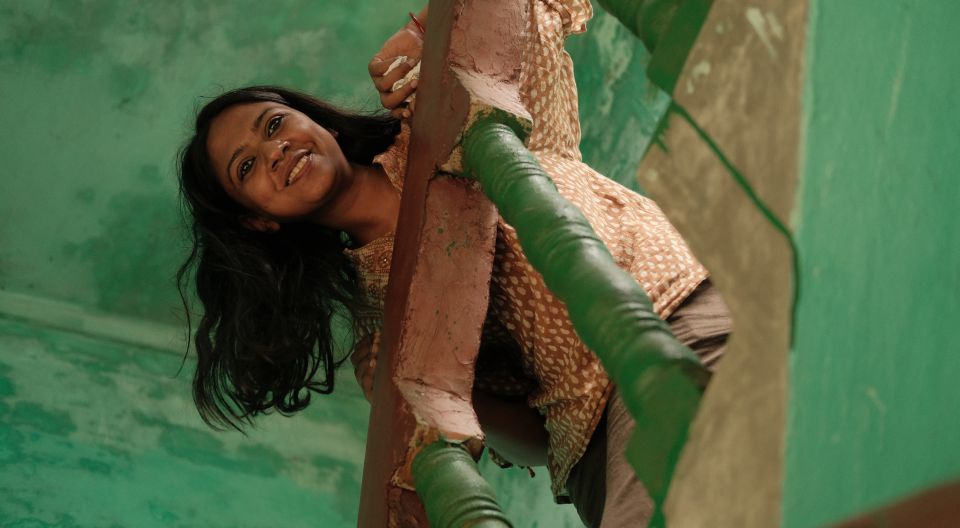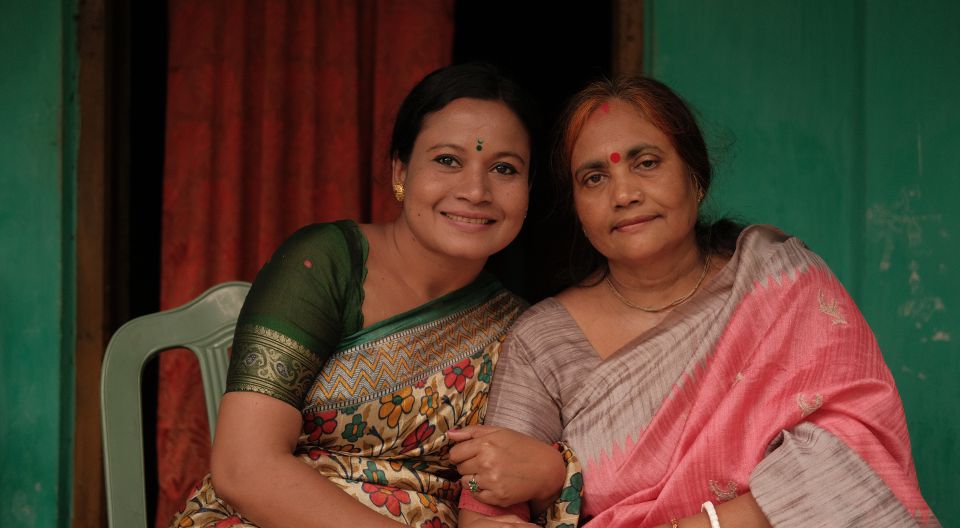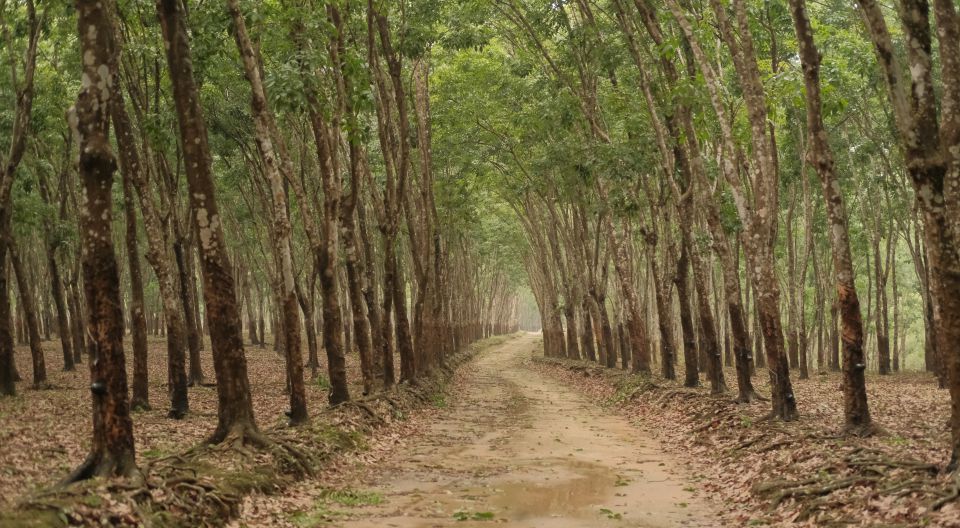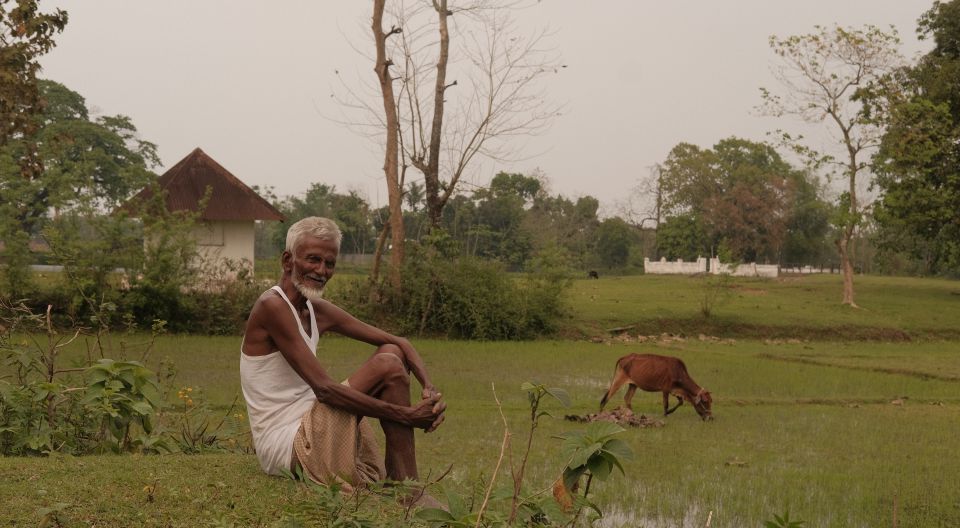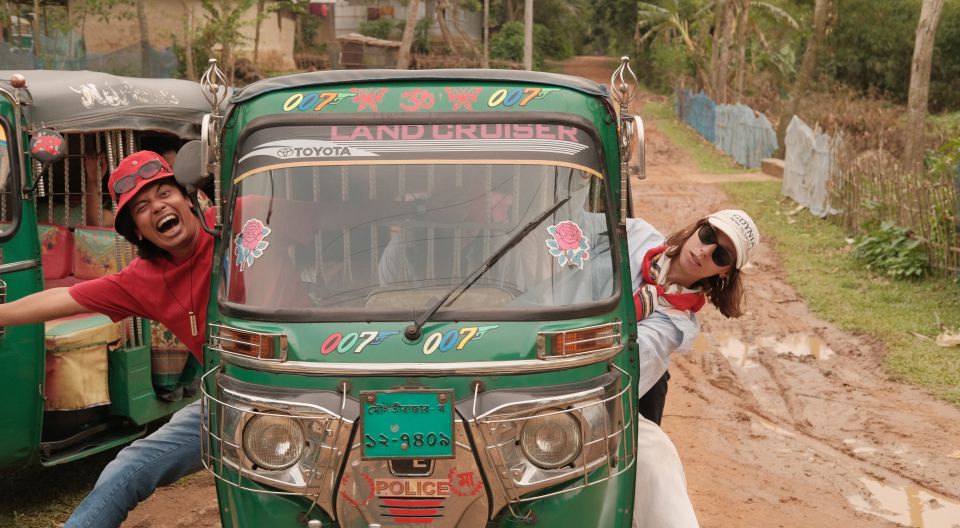23.
04.
2024.
Department
DOP
DOP
Natalia Pośnik, a student of the Cinematography Department of our School, talks about her film trip to Bangladesh. Eco Film Lab - Where Nature, Man and Film lived in harmony.
Natalia Pośnik represented our School during the Eco Film Lab residency organized by IAFM (International Academy of Film and Media) in Bangladesh - specifically in the Serajnagar Tea Estate in the north-eastern Moulvibazar region. Eco Film Lab was mentored by Indian director, Pushpendra Singh.
Jolanta Karpińska, School PR Office - Eco Film Lab. A residency with an ecological theme, carried out so close to Nature and Man. How were films made during the residency?
Natalia Pośnik: “Six filmmakers living in Dhaka were invited to participate in the programme. There is no film school in Bangladesh; they were mainly journalism students who chose to specialize in film and media. They were divided into three teams of two where they worked on their film projects under the supervision of Pushpendra Singh. They got to know the locations, and local community and identified the ecological problems that occur there. Their task was to highlight topics related to ecology, while not talking about them directly. I was responsible for the visual shape of their scripts and the cinematography.”
J.K: “What did the film crew and the set look like under these conditions and working with such specific assumptions of this residency?”
N.P: “We worked with ordinary people in their natural environment so the audition was something unusual. It was necessary to meet people and find those who wanted to take part in the project and at the same time be interesting for the film which was being made. We didn't want to create people from scripts, but to find them. Two 14-year-olds who took part in one of the films, Yamin and Momo, were devoted to our project - they were actors, but they were also fascinated by the production itself. They assisted us every day on the other two projects, and spent time with us after the shoot so they became extremely close to the crew. I was fascinated by the openness of the people we met during the project - families welcomed us into their homes; we used them as film sets, and we rested there and ate meals with these people. We knew their daily schedule and respected their order and their boundaries. This collaboration was very organic.”
J.K: “You were very close to your characters and their lives - it wouldn’t have been possible to build such relationships if you’d been working with a large film crew.”
N.P: “We worked with a minimal crew. I didn't have a gaffer or lighting guy. I relied on my experience, but also on the experience of the people who were on the set - I had an assistant who learned this role from me on the set and was great at what he did. I didn't have a person to correct the light, but it turned out that it didn't need to be corrected - you just had to follow it, and be in the right place, at the right time. I observed nature, how it reacts and at what time. Nature there is predictable. You have to listen to it. Working there made me realize that only a minimal amount of resources are needed on the set, and you don't need an extensive crew to produce complex film images. Words from classes at our school, in the third year of cinematography, run by Wojciech Staroń, Ryszard Lenczewski and Bartosz Świniarski, came back to me. They used to say, “Be in the right place, at the right time.” I tested on myself how to incorporate documentary observations into a fiction film. It's a valuable experience.
J.K: “For one thing, it is your professional experience, and for the other, it is functioning in a culturally and climatically foreign place. How did you find your way around? Is there such a thing as a global film language?
N.P: “The language of film art is universal. We did not encounter any major difficulties at the stage of organizing the set. Each of us spoke English fluently, there were no communication problems. When I read the scripts we were supposed to work on, I didn't feel like I was reading about another culture; the text was a film text for me and I immediately visualized it with specific images. Of course, I am not from the same cultural circle, I do not understand all the nuances, signs and symbols. Neither do I know Bengali, so I couldn't fluently follow the words spoken in the dialogue scenes. However, I knew perfectly well the context of the scene, and its intentions. I assessed the looks, the rhythm of gestures, body language and the duration of the shot. I suggested framing which allowed for free movement, and restrictions related to continued movement led to interesting compositional solutions. Based on Pushpendra's experience and techniques in working with non-professionals, the actor, due to the activity assigned to him, organically fulfilled visual needs by functioning within the composition in an organized and planned way. That's why, in the end, we looked for content in actions, not words - this enabled us to work together exceptionally, both at the directorial and cinematographic levels. If you understand a film without words, it means it is well told.”
J.K: “How do you remember your communication and relationships with the members of the film crew and those who hosted you in Bangladesh?”
N.P: “I felt appreciated and cared for there. I met with great trust and a keen willingness to cooperate. The directors trusted their and my competencies, and the dialogue between us was substantive. We did not function in a hierarchy system. The primary goal was to introduce me to their world and my goal was to show their world in the best possible way in the image. They were also prepared to work with a camerawoman from a completely different cultural and climatic area. I had a hostess who took care of me - she took care of food, safety and rest. We had the feeling that every, even the smallest, function in this team was of equal value. Everyone contributed to one effect, working towards a common goal. It was a true partnership.”
J.K: “Nature was also a partner there, wasn’t it?”
N.P: “I drew from it. What inspires me is basing my work on natural locations, writing scripts for the existing space, and following the natural rhythm of the characters. This also results from my previous studies of architecture, where answers to design needs arise in the relationship with the environment. The next step in researching this matter was an artist residency in Valletta, which I had in 2018. It was entitled "How not to fight the city?", as a result of which a series of analogue photographs was created. Therefore, documentary observation of phenomena was important to me. I am glad that the trip to Bangladesh reminded me of those values where Nature and Man provide the most answers. A feeling that I called visual empathy was revived. It involves not pushing forward ideas that are contrary to Nature and Man and which contradict them. The directors I had the opportunity to work with also followed these beliefs; perhaps it was our love language and a value that unified cultural differences. We saw positive results from such cooperation. Without fighting Nature, we could use our creative potential in designing a conscious visual layer - we could expose Man. Thanks to this, there was time for art. There is no need for many tools or physical effort of the team. Art is not killed by technology but only complements it substantively.
J.K: “Apart from the imperative of respecting the rights of Nature and Man within the world of film, what else remains with you after this journey?”
N.P: “I already know that a person must travel to develop. I feel enriched having been there. I gained the feeling that trust, communication, partnership, and mutual respect bring the best results. We didn't know each other, we had little time, we came from different cultures, and yet we managed not only to reach the goal but also enjoy its results. I can see smiling people from there. People with eyes so wide open that when you talk to them, you see your image reflected in them. This is something I would like to remember. Each of us deserves an enormous amount of respect and warmth. These people, having so little, gave so much. The film crew did not mean directors, cameramen and actors. It was us and the entire village where we were. I want to remember this.
______________
Keep an eye out for the results of the residency stay – three short films that are currently in post-production. We will keep you posted about them.
Thanks to IAFM (International Academy of Film and Media), especially to Bibesh Roy, for inviting Natalia to the Eco Film Lab for a residence stay, creating the right working conditions and providing care. Natalia, thank you very much for the interview.
Please check out Natalia’s photo report.
Jolanta Karpińska, School PR Office - Eco Film Lab. A residency with an ecological theme, carried out so close to Nature and Man. How were films made during the residency?
Natalia Pośnik: “Six filmmakers living in Dhaka were invited to participate in the programme. There is no film school in Bangladesh; they were mainly journalism students who chose to specialize in film and media. They were divided into three teams of two where they worked on their film projects under the supervision of Pushpendra Singh. They got to know the locations, and local community and identified the ecological problems that occur there. Their task was to highlight topics related to ecology, while not talking about them directly. I was responsible for the visual shape of their scripts and the cinematography.”
J.K: “What did the film crew and the set look like under these conditions and working with such specific assumptions of this residency?”
N.P: “We worked with ordinary people in their natural environment so the audition was something unusual. It was necessary to meet people and find those who wanted to take part in the project and at the same time be interesting for the film which was being made. We didn't want to create people from scripts, but to find them. Two 14-year-olds who took part in one of the films, Yamin and Momo, were devoted to our project - they were actors, but they were also fascinated by the production itself. They assisted us every day on the other two projects, and spent time with us after the shoot so they became extremely close to the crew. I was fascinated by the openness of the people we met during the project - families welcomed us into their homes; we used them as film sets, and we rested there and ate meals with these people. We knew their daily schedule and respected their order and their boundaries. This collaboration was very organic.”
J.K: “You were very close to your characters and their lives - it wouldn’t have been possible to build such relationships if you’d been working with a large film crew.”
N.P: “We worked with a minimal crew. I didn't have a gaffer or lighting guy. I relied on my experience, but also on the experience of the people who were on the set - I had an assistant who learned this role from me on the set and was great at what he did. I didn't have a person to correct the light, but it turned out that it didn't need to be corrected - you just had to follow it, and be in the right place, at the right time. I observed nature, how it reacts and at what time. Nature there is predictable. You have to listen to it. Working there made me realize that only a minimal amount of resources are needed on the set, and you don't need an extensive crew to produce complex film images. Words from classes at our school, in the third year of cinematography, run by Wojciech Staroń, Ryszard Lenczewski and Bartosz Świniarski, came back to me. They used to say, “Be in the right place, at the right time.” I tested on myself how to incorporate documentary observations into a fiction film. It's a valuable experience.
J.K: “For one thing, it is your professional experience, and for the other, it is functioning in a culturally and climatically foreign place. How did you find your way around? Is there such a thing as a global film language?
N.P: “The language of film art is universal. We did not encounter any major difficulties at the stage of organizing the set. Each of us spoke English fluently, there were no communication problems. When I read the scripts we were supposed to work on, I didn't feel like I was reading about another culture; the text was a film text for me and I immediately visualized it with specific images. Of course, I am not from the same cultural circle, I do not understand all the nuances, signs and symbols. Neither do I know Bengali, so I couldn't fluently follow the words spoken in the dialogue scenes. However, I knew perfectly well the context of the scene, and its intentions. I assessed the looks, the rhythm of gestures, body language and the duration of the shot. I suggested framing which allowed for free movement, and restrictions related to continued movement led to interesting compositional solutions. Based on Pushpendra's experience and techniques in working with non-professionals, the actor, due to the activity assigned to him, organically fulfilled visual needs by functioning within the composition in an organized and planned way. That's why, in the end, we looked for content in actions, not words - this enabled us to work together exceptionally, both at the directorial and cinematographic levels. If you understand a film without words, it means it is well told.”
J.K: “How do you remember your communication and relationships with the members of the film crew and those who hosted you in Bangladesh?”
N.P: “I felt appreciated and cared for there. I met with great trust and a keen willingness to cooperate. The directors trusted their and my competencies, and the dialogue between us was substantive. We did not function in a hierarchy system. The primary goal was to introduce me to their world and my goal was to show their world in the best possible way in the image. They were also prepared to work with a camerawoman from a completely different cultural and climatic area. I had a hostess who took care of me - she took care of food, safety and rest. We had the feeling that every, even the smallest, function in this team was of equal value. Everyone contributed to one effect, working towards a common goal. It was a true partnership.”
J.K: “Nature was also a partner there, wasn’t it?”
N.P: “I drew from it. What inspires me is basing my work on natural locations, writing scripts for the existing space, and following the natural rhythm of the characters. This also results from my previous studies of architecture, where answers to design needs arise in the relationship with the environment. The next step in researching this matter was an artist residency in Valletta, which I had in 2018. It was entitled "How not to fight the city?", as a result of which a series of analogue photographs was created. Therefore, documentary observation of phenomena was important to me. I am glad that the trip to Bangladesh reminded me of those values where Nature and Man provide the most answers. A feeling that I called visual empathy was revived. It involves not pushing forward ideas that are contrary to Nature and Man and which contradict them. The directors I had the opportunity to work with also followed these beliefs; perhaps it was our love language and a value that unified cultural differences. We saw positive results from such cooperation. Without fighting Nature, we could use our creative potential in designing a conscious visual layer - we could expose Man. Thanks to this, there was time for art. There is no need for many tools or physical effort of the team. Art is not killed by technology but only complements it substantively.
J.K: “Apart from the imperative of respecting the rights of Nature and Man within the world of film, what else remains with you after this journey?”
N.P: “I already know that a person must travel to develop. I feel enriched having been there. I gained the feeling that trust, communication, partnership, and mutual respect bring the best results. We didn't know each other, we had little time, we came from different cultures, and yet we managed not only to reach the goal but also enjoy its results. I can see smiling people from there. People with eyes so wide open that when you talk to them, you see your image reflected in them. This is something I would like to remember. Each of us deserves an enormous amount of respect and warmth. These people, having so little, gave so much. The film crew did not mean directors, cameramen and actors. It was us and the entire village where we were. I want to remember this.
______________
Keep an eye out for the results of the residency stay – three short films that are currently in post-production. We will keep you posted about them.
Thanks to IAFM (International Academy of Film and Media), especially to Bibesh Roy, for inviting Natalia to the Eco Film Lab for a residence stay, creating the right working conditions and providing care. Natalia, thank you very much for the interview.
Please check out Natalia’s photo report.
